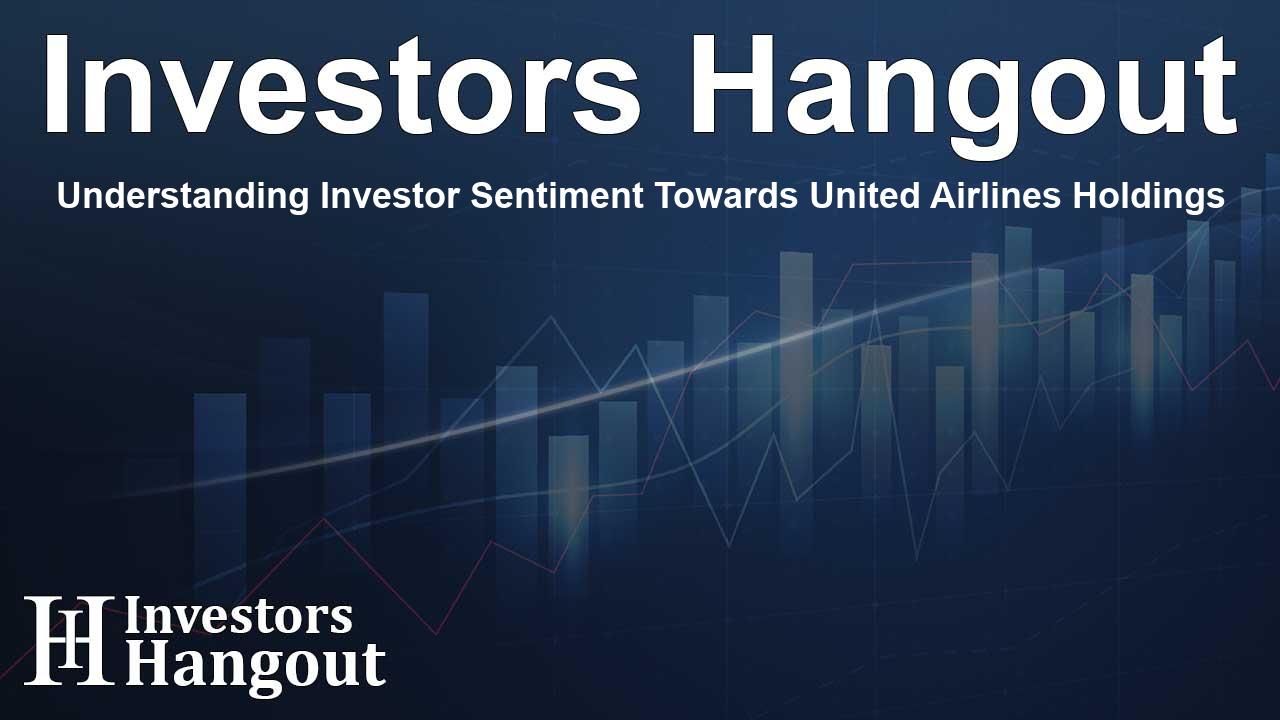Understanding Investor Sentiment Towards United Airlines Holdings

Investors' Sentiment Towards United Airlines Holdings Inc
United Airlines Holdings Inc (NYSE: UAL) continues to capture the interest of investors as its short interest has seen a notable increase of 16.59% since the last report. Data from exchanges reveal that approximately 14.83 million shares have been sold short, representing 5.2% of all available regular shares for trading. Given the current trading volume, it would take traders around 2.66 days to cover their short positions on average.
The Significance of Short Interest
So, what exactly does short interest mean? It refers to shares that have been sold short but not yet bought back or closed out. This practice, known as short selling, involves selling shares of a company that the seller does not own, with the anticipation that the stock price will decline. Should the price fall, short sellers can buy back the shares at a lower price, reaping profits; however, if the price increases, short sellers incur losses.
Investor Sentiment and Market Indicators
Monitoring short interest levels is crucial as it can serve as a reflection of market sentiment towards a specific stock. An uptick in short interest often indicates that investors are feeling bearish about the stock’s future prospects. Conversely, a decrease in short interest could suggest a more optimistic outlook among investors.
Tracking United Airlines Holdings Inc Short Interest
Examining the behavior of United Airlines Holdings Inc stocks over time, it is evident that the percentage of shares sold short has been rising steadily since the last report. However, this doesn't necessarily imply an immediate decline in stock prices. Investors should remain alert to the increasing number of shares being shorted, as it highlights a shift in investor sentiment.
Visual Analysis of Short Interest Trends
While a graphical representation could provide more clarity on these trends, it is clear that the short interest in United Airlines Holdings Inc is on an upward trajectory, which could serve as an important indicator for traders and investors alike.
Comparative Analysis with Industry Peers
Comparing United Airlines Holdings Inc with its peers can yield insightful perspectives on its performance. Peers typically share similarities in aspects such as industry classification, market capitalization, and financial structure. Evaluating these relationships can guide investors in making more informed decisions.
Short Interest Among Competitors
Current analyses show that United Airlines Holdings Inc has a short interest as a percentage of float that stands at 5.2%, which is lower than the peer group average of 8.42%. This indicates that traders have less bearish sentiment towards United Airlines compared to many of its competitors in the aviation sector.
The Potential Implications of Short Interest Increase
A rising short interest, despite its seemingly negative connotation, can sometimes suggest bullish signals for a stock. Some investors view high short interest as a potential for a short squeeze, where the price would rise rapidly, forcing short sellers to buy back shares to cover their positions, consequently driving the price even higher.
Conclusion on Investor Sentiment
In the realm of investing, understanding market dynamics and investor sentiments is crucial. For United Airlines Holdings Inc, the current trends in short interest and comparisons with industry peers offer valuable insights into the sentiments of investors. With such fluctuations in the market, staying informed and prepared can empower investors to make sound investment choices.
Frequently Asked Questions
What does increasing short interest indicate?
Increasing short interest can suggest that investors are becoming more bearish about a stock’s future performance.
How is short interest measured?
Short interest is measured as a percentage of shares sold short compared to the total available shares for trading.
What can trigger a short squeeze?
A rapid increase in stock prices may lead to a short squeeze, forcing short sellers to buy back shares to cover their positions.
How does United Airlines compare to its industry peers?
United Airlines has a short interest percentage that is lower than the average among its peers, indicating a more positive investor sentiment.
Why is monitoring short interest important?
Monitoring short interest helps investors gauge market sentiment and potential price movements for stocks.
About The Author
Contact Lucas Young privately here. Or send an email with ATTN: Lucas Young as the subject to contact@investorshangout.com.
About Investors Hangout
Investors Hangout is a leading online stock forum for financial discussion and learning, offering a wide range of free tools and resources. It draws in traders of all levels, who exchange market knowledge, investigate trading tactics, and keep an eye on industry developments in real time. Featuring financial articles, stock message boards, quotes, charts, company profiles, and live news updates. Through cooperative learning and a wealth of informational resources, it helps users from novices creating their first portfolios to experts honing their techniques. Join Investors Hangout today: https://investorshangout.com/
The content of this article is based on factual, publicly available information and does not represent legal, financial, or investment advice. Investors Hangout does not offer financial advice, and the author is not a licensed financial advisor. Consult a qualified advisor before making any financial or investment decisions based on this article. This article should not be considered advice to purchase, sell, or hold any securities or other investments. If any of the material provided here is inaccurate, please contact us for corrections.
